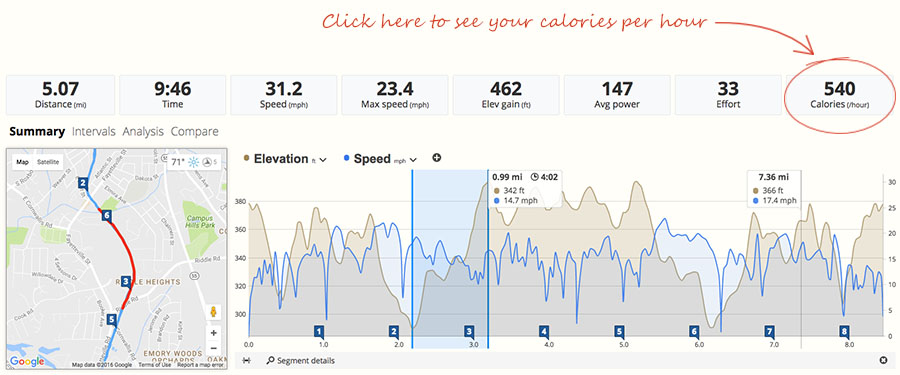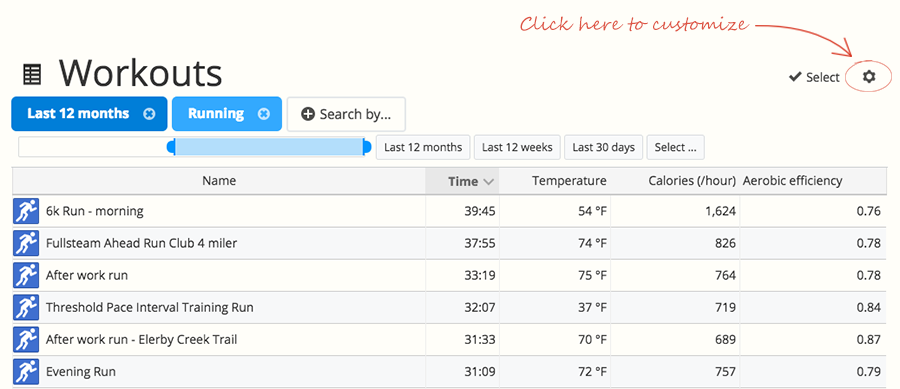Optimizing Salt and Fluid Intake
A triathlete's quest to eliminate cramping and improve performance
We were recently contacted by David Stankard, a SportTracks user who had some specific questions about managing the data from his smart scale. We quickly answered his questions, and asked a few of our own about his training practices. What followed was an interesting conversation about the use of tech to determine your optimal hydration and fuel needs to excel in races.
David is a triathlete, and he experienced cramping coming off the bike at two 70.3 races in 2016. He decided to focus on dialing-in his sodium, hydration, and carb intake to avoid repeating this setback a third time. After reading an article on Slowtwitch entitled The Math of Salt Loss, he decided to follow some of the recommendations to see if they helped.
The Slowtwitch article is definitely worth reading, but here's the gist if you don't have time right now... It's about how over-hydration can be just as dangerous as dehydration in endurance sports, but with the right sodium and fluid intake, you'll stay healthy and perform at a higher level. The article doesn't explain the nuts and bolts of how to determine your own fuel needs, so David decided to figure it out.
If he could determine the optimal amount of hydration and fuel he needed for a given weather condition, he could put in his best effort on race day.
Using his Withings smart scale to weigh himself immediately before and after long runs from his home, David started to quantify his weight loss from sweating — and correlate its relationship with the weather conditions of his workouts. If he could determine the optimal amount of hydration and fuel he needed for a given weather condition, he could put in his best effort on race day.
The goal is to offset the sodium and fluid you lose when you sweat, so on hotter days you'll likely need more replenishment than on cooler days. SportTracks automatically gathers detailed weather information for your workouts and calculates calorie burn, but if you want to track your sodium and fluid, you need to closely log your consumption and body weight changes after long, hard workouts.
Optimally replenishing fluid and sodium isn't as simple as drinking when you feel like it and guessing how many salt tabs to take. To gain a competitive edge you need to strike the perfect balance. Too much or too little both result in negatively impacting your performance and potentially exposing you to dehydration or hyponatremia (over-hydration).
Before he started closely logging his runs, David focused on bike rides. To determine his average calorie burn, he analyzed his 3+ hour rides and arrived at 547 calories per hour. He specifically chose long training rides and races, as opposed to century rides where you stop and eat every 20 miles. (It's worth noting that you don't need to replace every calorie, and that an average athlete can process between 200 to 600 calories per hour).

His research determined that the bulk of weight loss during exercise is water, so that's where the "weigh before and after" advice comes in. It's been shown that one liter of sweat contains around 920 mg of sodium, and therefore 1 lb (0.45 kg) of sweat contains around 435 mg.
As was stated earlier in the article, David started weighing himself before and after each hard workout. He records the temperature, the amount of weight lost from sweating, how much water he consumed, his net weight loss, and the duration. He then calculates how many calories were burned and converts it all into an hourly burn rate.
Here are the readings he's collected so far:
| Temp | Weight lost to sweat |
Water consumed |
Net weight lost |
Length of run |
| 60°F 15.5°C |
5.4 lbs 2.45 kg |
22.4 oz | 4 lbs 1.81 kg |
2.7 hours |
| 55°F 12.8°C |
1.6 lbs 0.73 kg |
0 oz | 1.6 lbs 0.73 kg |
1.1 hours |
| 77°F 25°C |
7.5 lbs 3.4 kg |
22.4 oz | 6.1 lbs 2.77 kg |
2.2 hours |
| 66°F 18.9°C |
3.5 lbs 1.6 kg |
11.2 oz | 2.8 lbs 1.27 kg |
1.5 hours |
| 62°F 16.7°C |
3.6 lbs 1.63 kg |
0 oz | 3.6 lbs 1.63 kg |
1.6 hours |
| 68°F 20°C |
7.3 lbs 3.3 kg |
33.6 oz | 5.2 lbs 2.36 kg |
3.2 hours |
| 61°F 16.1°C |
3.8 lbs 1.72 kg |
11.2 oz | 3.1 lbs 1.4 kg |
1.8 hours |
David takes salt tablets and energy gels when he runs, and he also closely tracks this consumption. The data gives him an idea of how effectively he hydrated, replaced sodium, and replaced carbs.
It's easy to view a neatly organized list of your calorie burn, duration, and distance in SportTracks. Just visit your Workouts page and select the gear icon in the top right corner. This enables you to customize the data displayed. You can also change the order by dragging the options up or down in the Customize screen:

At first he couldn't believe how little sodium he was replacing. But, by experimenting with intake, David has gone from an estimated 10% replacement to 96%. He has also moved from an average of 90 calories per hour intake to a little over 200, and reports feeling substantially better at the end of his runs.
He has now chosen sodium and carb products that suit his personal requirements (he admits he's a heavy sweater), and he's monitoring how his body handles them over the course of long runs. It's important to note that different people require different amounts of fluid and other fuels, so experimentation is necessary to determine your own personal needs.
Alternative remedies for cramping
David has tried other methods to reduce cramping in the past, and he's had some success using Base Salt. He also gets relief from swishing mustard around in his mouth when cramps hit (although, he has found that this doesn't work for everyone). His hope is that he will soon be able to avoid cramping altogether in addition to putting in a more competitive overall effort.
This project is ongoing, and David is still in the process of hashing it out. But, we thought it was interesting and potentially helpful for other SportTracks users, so we wanted to share it with you.
Do you have any experience with strategically balancing fluid and fuel intake? If so, we would love to hear about it the comment section below!
| Article written by Sam Mallery, Director of Marketing, Zone Five Software Inc. |

Comments
I'd advise against guessing your sweat sodium content as it can vary greatly amongst individuals. As stated in the article it's relatively easy to measure your sweat rate but unless you know your sweat sodium content per litre you can only guess how much sodium you need to replace. You can get a good idea over time through experimentation but I'd recommended getting the sweat test done as it's easy and whilst not cheap pays dividends when trying to build a good training and race strategy. Mine is 1330mg per litre for example and I can sweat up to 1.5L or more per hour in the heat - that's a lot of sodium lost through sweat. I have no affiliation with these guys but can thoroughly recommend their services as a paying customer - http://www.precisionhydration.com/
Thanks for the article, this is really useful. In the past I've consistently struggled in marathon distance running races, experiencing cramps in the latter stages and drop-offs in performance, accompanied by significantly raised heart rates. I also am a "heavy sweater" and have now started to monitor my weight loss on long runs so that in future I can calculate how much fluid and salt I need to replace. I'm looking forward to my next marathon in the spring to see if this approach will work for me!
Sweat sodium concentration varies by an order of magnitude between individuals (~250 mg/l - 2300 mg/l). If heat acclimated, sweat sodium concentration is lowered. Most of us consume far more sodium in our diet than we need. The recommended minimum daily intake is 500 mg. A typical sedentary western diet (2500 kcal/day) delivers 3,400 mg. Suppose you exercise for two hours, loose 2 liters of sweat and burn 2000 kcal. Say you've replace 500 kcal with a carbohydrate only sports drink and the rest with solid food. Sodium intake will be 5440 mg. Worst case sweat loss is 4600 mg, Average will be around 1400 mg. Most people do not need to supplement sodium and if they use an electrolyte drink during competition to speed absorption you will have more than enough sodium and should be wary of the risk of developing sodium related hypertension.
Cramping in long events is more likely related to fatigue, especially if it comes on when changing intensity or type of motion eg a sprint, standing up on the pedals on a climb or the transition to running.